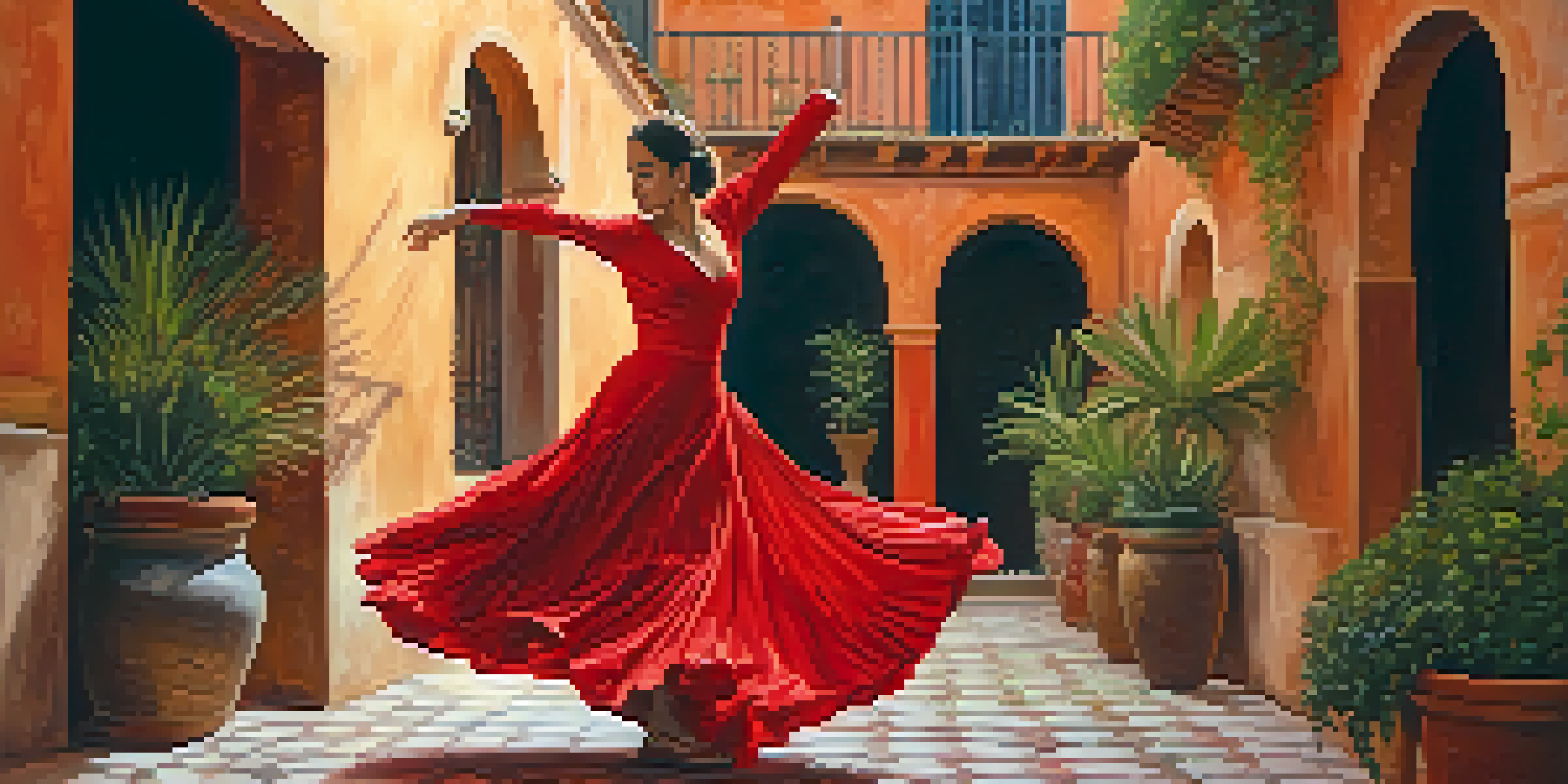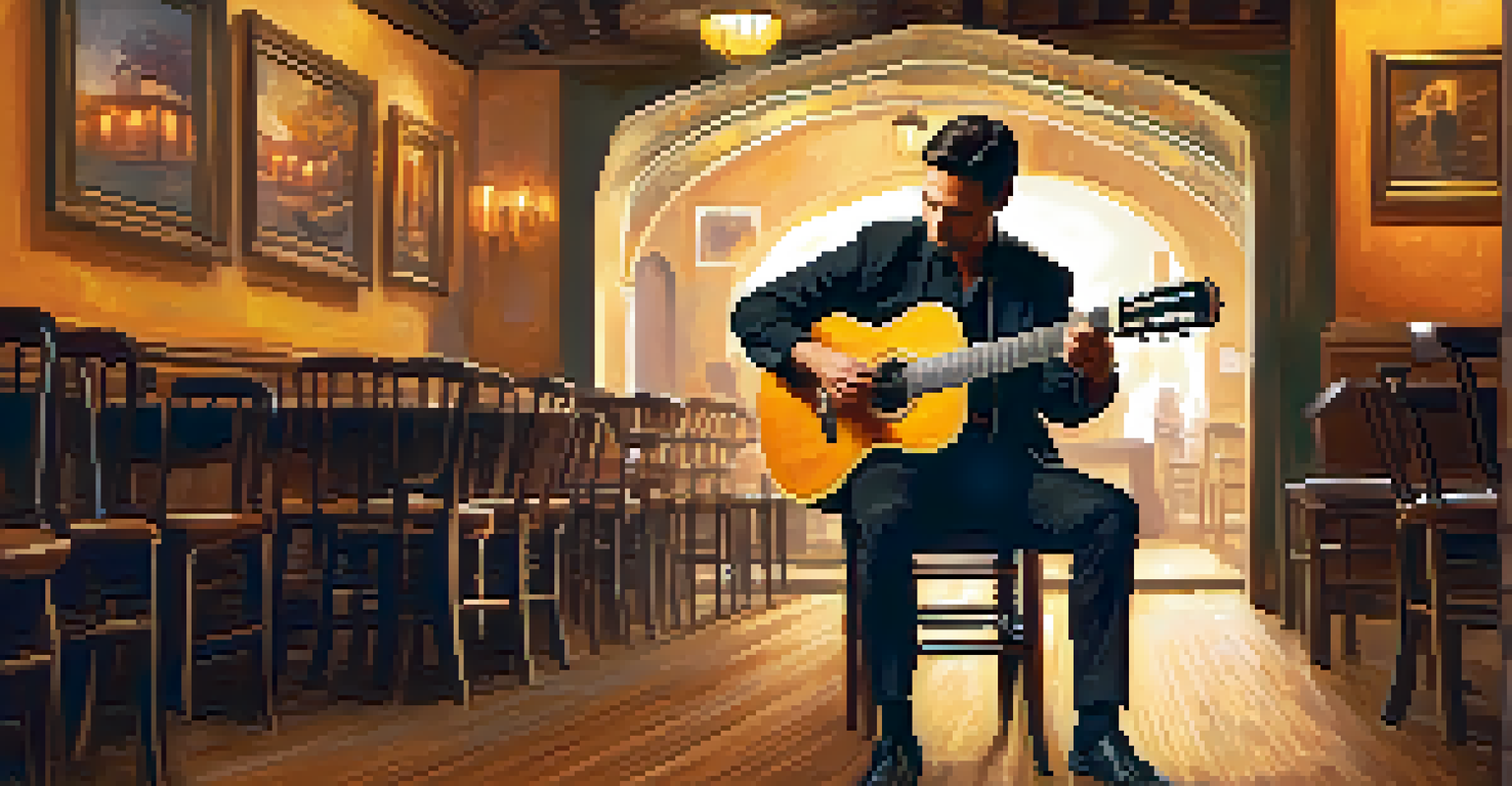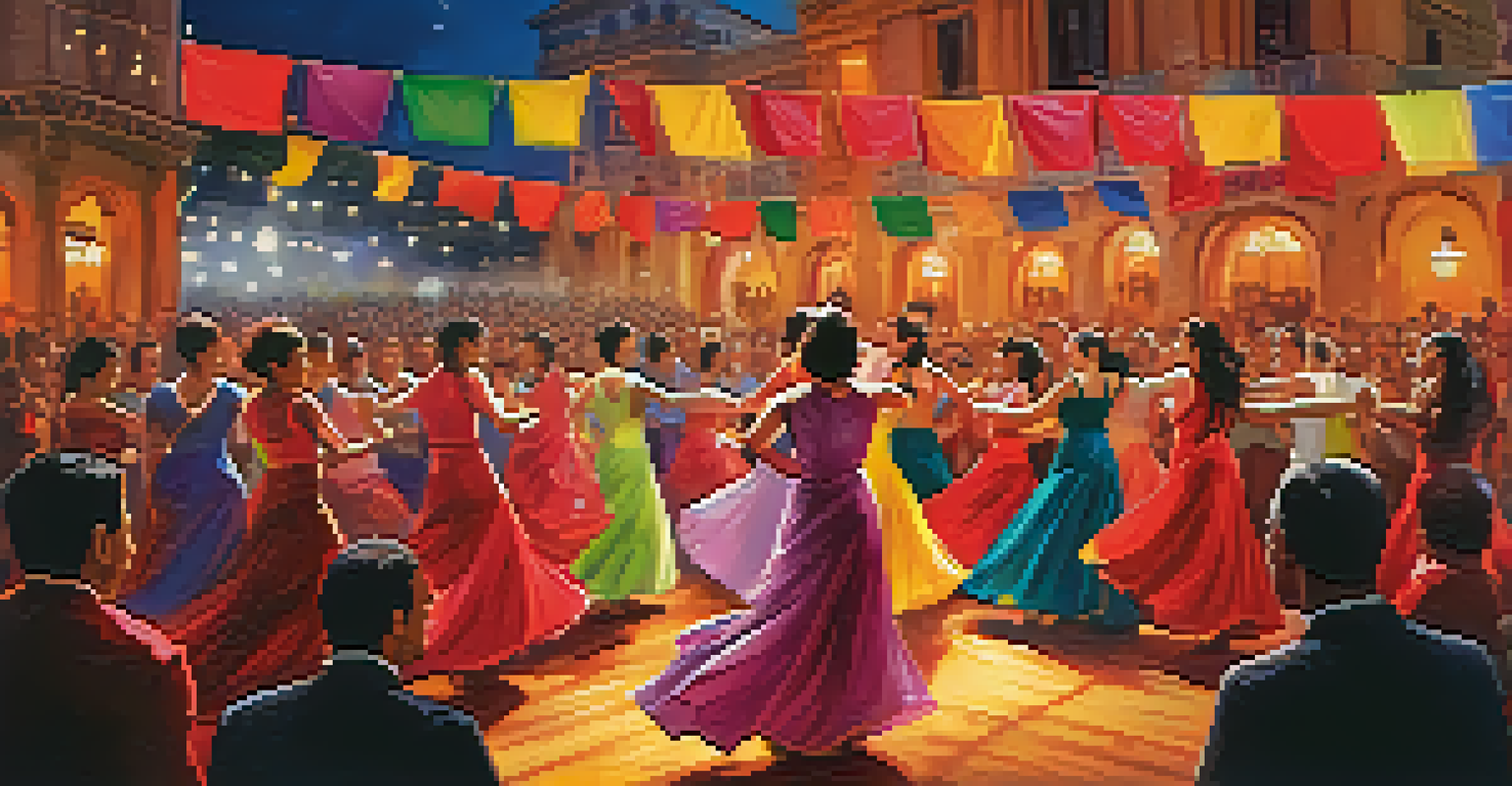The Evolution of Flamenco: A Cultural Heritage Journey

Flamenco's Roots: A Blend of Cultures
Flamenco's origins are as diverse as the cultures that contributed to it. Emerging in the Andalusian region of Spain, this art form is a fascinating amalgamation of Spanish, Moorish, and Romani influences. Each culture brought its unique rhythm, instrument, and storytelling technique, creating a tapestry of sound and movement that is distinctly Flamenco.
Flamenco is the expression of a people who, through their music and dance, tell their stories, their struggles, and their joys.
The interactions between these cultures during the Reconquista, a period of significant historical change, played a crucial role in shaping Flamenco. It is not merely a dance or music style but a reflection of the struggles, joys, and lives of the people who created it. The passion embedded in Flamenco is a testament to the resilience and rich history of these communities.
Today, Flamenco is recognized globally, yet its roots remind us of a time when cultural exchange was essential to survival and expression. This fusion of influences continues to evolve, keeping the spirit of its origins alive while adapting to contemporary interpretations.
The Traditional Elements of Flamenco
At its core, Flamenco consists of three primary elements: cante (singing), toque (guitar playing), and baile (dance). Each element carries its own significance and emotional weight, creating a holistic experience for both performers and audiences. The intricate footwork of the dancers, the soulful strumming of the guitarists, and the heartfelt lyrics intertwine to form a captivating narrative.

The cante is often improvisational, allowing singers to express deep emotions through their voices, while the guitarists provide the rhythmic backbone. Dancers use their bodies to communicate the music's intensity, making every performance unique. This dynamic interplay allows for a deeply personal connection between the performers and the audience.
Flamenco's Cultural Fusion
Flamenco is a rich blend of Spanish, Moorish, and Romani influences, reflecting the historical interactions of these cultures.
Moreover, traditional Flamenco is rooted in specific styles called 'palos,' each with its own mood and rhythm. From the lively 'alegrías' to the somber 'soleá,' these styles evoke a range of emotions, showcasing the versatility and depth of Flamenco as a performing art.
The Role of Flamenco in Spanish Culture
Flamenco is more than a performance art; it is a vital part of Spanish cultural identity. It embodies the spirit of community and celebration, often performed during festivals, family gatherings, and various social events. This immersive experience fosters a sense of belonging and connection, as people come together to enjoy and participate in the performance.
The beauty of Flamenco lies in its ability to adapt and evolve while remaining true to its roots.
The art form has also played a role in social movements, becoming a voice for the marginalized, particularly the Romani people. Through its expressive power, Flamenco has challenged societal norms and highlighted issues of identity, pride, and resilience. This ability to convey profound messages makes Flamenco a significant cultural artifact.
As a UNESCO-recognized Intangible Cultural Heritage, Flamenco not only enriches Spain’s cultural landscape but also serves as a bridge to connect with the global community. Its recognition emphasizes the importance of preserving and promoting this unique art form for future generations.
Flamenco's Global Influence and Adaptation
As Flamenco gained international popularity, it began to intertwine with other music and dance genres, creating new hybrid forms. This evolution has led to the emergence of various contemporary styles, incorporating elements from jazz, ballet, and even pop music. Such adaptations have kept Flamenco relevant in a rapidly changing cultural landscape.
Global collaborations have introduced Flamenco to diverse audiences, inspiring artists worldwide to explore its rhythms and movements. For instance, Flamenco fusion artists have successfully blended traditional techniques with modern music, reaching younger generations and broadening the art form's appeal. This cross-pollination of styles is a testament to Flamenco's adaptability.
Flamenco's Global Evolution
The art form has adapted to contemporary styles and genres, ensuring its relevance while raising questions about cultural authenticity.
However, while these adaptations are essential for keeping Flamenco alive, they also raise questions about cultural authenticity. Striking a balance between innovation and tradition is crucial for the preservation of Flamenco's rich heritage while allowing it to thrive in contemporary contexts.
The Role of Technology in Flamenco's Evolution
In the digital age, technology has become an essential tool for Flamenco artists, helping them reach audiences far beyond their local communities. Social media platforms allow performers to showcase their talents, share their stories, and connect with fans worldwide. This accessibility has led to a resurgence of interest in Flamenco, especially among younger audiences.
Online courses and tutorials have made learning Flamenco more accessible than ever, enabling aspiring dancers and musicians to hone their skills from the comfort of their homes. This democratization of knowledge empowers individuals to engage with the art form, fostering a new generation of Flamenco enthusiasts and practitioners.
However, the use of technology also poses challenges. Traditionalists may express concern that the essence of Flamenco could be diluted in the digital realm. Yet, as artists find innovative ways to incorporate technology while honoring their roots, Flamenco continues to evolve, ensuring its relevance in today's cultural fabric.
Flamenco Festivals: Celebrating Heritage and Innovation
Flamenco festivals serve as vibrant celebrations of this art form, showcasing both traditional performances and innovative interpretations. Events like the Bienal de Flamenco in Seville or the Festival de Jerez attract artists and audiences from around the globe, fostering an environment of cultural exchange and appreciation.
These festivals provide a platform for established artists and emerging talent alike, allowing them to share their interpretations of Flamenco. Workshops, masterclasses, and discussions encourage collaboration and learning, creating a sense of community among participants. Such gatherings strengthen the ties between generations and promote the art form's evolution.
Technology's Role in Flamenco
Digital platforms and online resources have made Flamenco more accessible, fostering a new generation of enthusiasts and practitioners.
Moreover, festivals often highlight the importance of preserving traditional elements while also embracing new influences. This balance showcases Flamenco’s dynamic nature and its ability to adapt while remaining rooted in its rich cultural heritage.
The Future of Flamenco: A Cultural Legacy
As we look to the future, the continued evolution of Flamenco will depend on the willingness of artists to innovate while honoring their roots. This delicate balance is crucial for preserving the cultural legacy of Flamenco while embracing new ideas and influences. The art form's resilience in the face of change is a testament to its enduring appeal.
Educational initiatives and community programs play a vital role in keeping Flamenco alive for future generations. By teaching the history, techniques, and cultural significance of Flamenco, these programs can foster a deeper understanding and appreciation of this unique art form. Such efforts are essential for sustaining Flamenco's rich heritage.

Ultimately, the future of Flamenco lies in its ability to adapt and evolve, ensuring that it remains a vibrant and relevant aspect of cultural expression. As long as the passion and spirit of Flamenco endure, this beautiful art form will continue to inspire and connect people around the world.